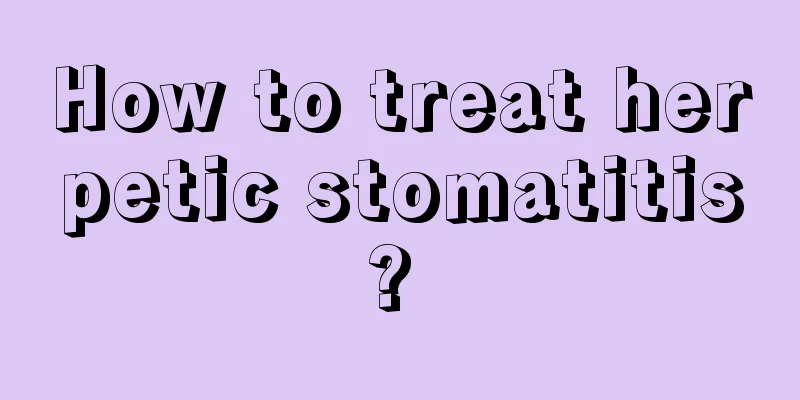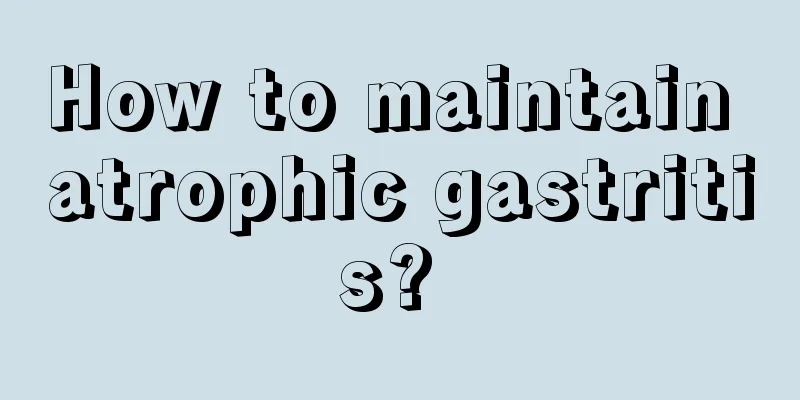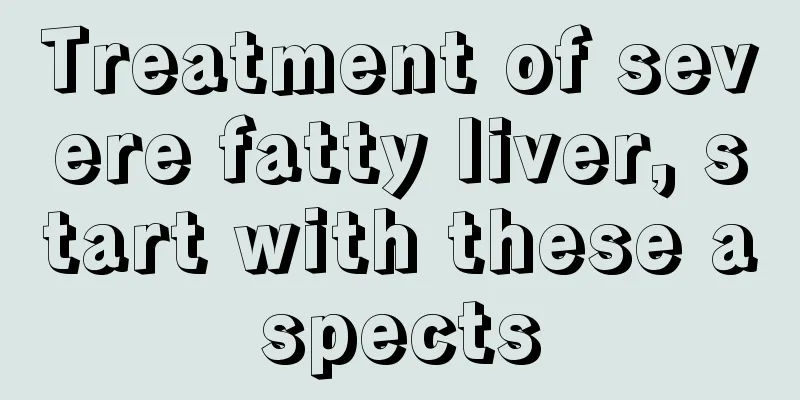How to treat herpetic stomatitis?

|
Herpetic stomatitis is the most common acute oral mucosal infection in children. It can be transmitted through droplets, saliva, clothes, and tableware. It can enter the human body through the respiratory tract, mouth, eyes, nose, etc. It usually appears in the form of small blisters and is self-limiting and prone to recurrence. So how should herpetic stomatitis be treated? 1. Characteristics of herpetic stomatitis in children (1) It is more common in children under 6 years old, with the highest incidence in children aged 6 months to 2 years. (2) Prodromal symptoms are severe and may include fever, headache, fatigue, muscle pain, swollen lymph nodes, etc. (3) Any part of the oral mucosa can be affected, with the most obvious being the upper palate and gingival margin adjacent to the deciduous molars (adult premolars). The main manifestation is clusters of small blisters that are easy to rupture, forming large areas of erosion. (4) The course of the disease is about 7 to 10 days and is self-limited. 2. Recurrent herpetic stomatitis (1) Common in adults, the course of the disease is about 1 to 2 weeks. (2) Predisposing factors include infection, fatigue, sun exposure, local irritation, emotional stress, gastrointestinal dysfunction, environmental changes, etc. (3) The lesions are usually located on or near the lips, and the main symptoms are burning-blistering-erosion-scab formation. (4) No scars are left after the lesions heal, but there may be pigmentation. 3. How to treat herpetic stomatitis in children? 1. Systemic antiviral treatment: nucleoside antiviral drugs and ribavirin. For primary herpetic stomatitis, acyclovir 200 mg/time, 5 times/day, or ribavirin 200 mg/time, 3-4 times/day can be taken orally. 2. Local treatment: Topical medication for the oral mucosa. Commonly used preparations include solutions, pastes, powders and lozenges, such as compound boric acid solution, 0.1% to 0.2% chlorhexidine solution for gargle, phthalamide ointment, acyclovir ointment for local application, tin powder, Yangyin Shengji powder for local use, chlorhexidine gluconate tablets for sublingual use, etc. For recurrent herpes labialis, local irradiation with helium-neon laser can also be used. 3. Symptomatic and supportive therapy: Patients with severe conditions should rest in bed. Those with difficulty eating can receive intravenous infusion and supplement with vitamins B and C, etc. 4. Treatment with traditional Chinese medicine. |
<<: Can Boric Acid Solution Treat Eczema?
>>: How to distinguish between yang deficiency and yin deficiency in the body?
Recommend
Dietary care after rectal cancer surgery
Rectal cancer is a common malignant tumor in the ...
What is the pain above the knee
Some people sometimes have pain above the knee an...
What are the tips to improve eyesight
As the saying goes, eyes are the windows to the s...
What should I do if I have a terrible toothache at night?
Toothache not only affects our normal life, but a...
How many centimeters above which stomach cancer is not considered early stage
Whether gastric cancer is in the early stage usua...
How to prevent rotavirus enteritis?
Because the shape of rotavirus under an electron ...
What's the matter with the black spots on the tongue
There are black spots on the edge of the tongue. ...
Small red bumps on face
The appearance of small red pimples on the face m...
How to treat nasopharyngeal carcinoma after immunohistochemistry confirmation
How to treat nasopharyngeal carcinoma after immun...
What is the dietary therapy for acute renal failure?
Acute renal failure is a general term for a syndr...
What is the difference between freckles and dark spots?
Some female friends worry about the spots on thei...
Is it good for milk powder to foam?
Many parents will find a problem when making milk...
How to match clothes with short legs?
In life, every girl wants to have long legs, but ...
Which foods can prevent prostate cancer? What are the ways to prevent prostate cancer?
Nowadays, many people suffer from prostate cancer...
What's wrong with a jagged tongue?
If the tongue is serrated, the first thing to con...









